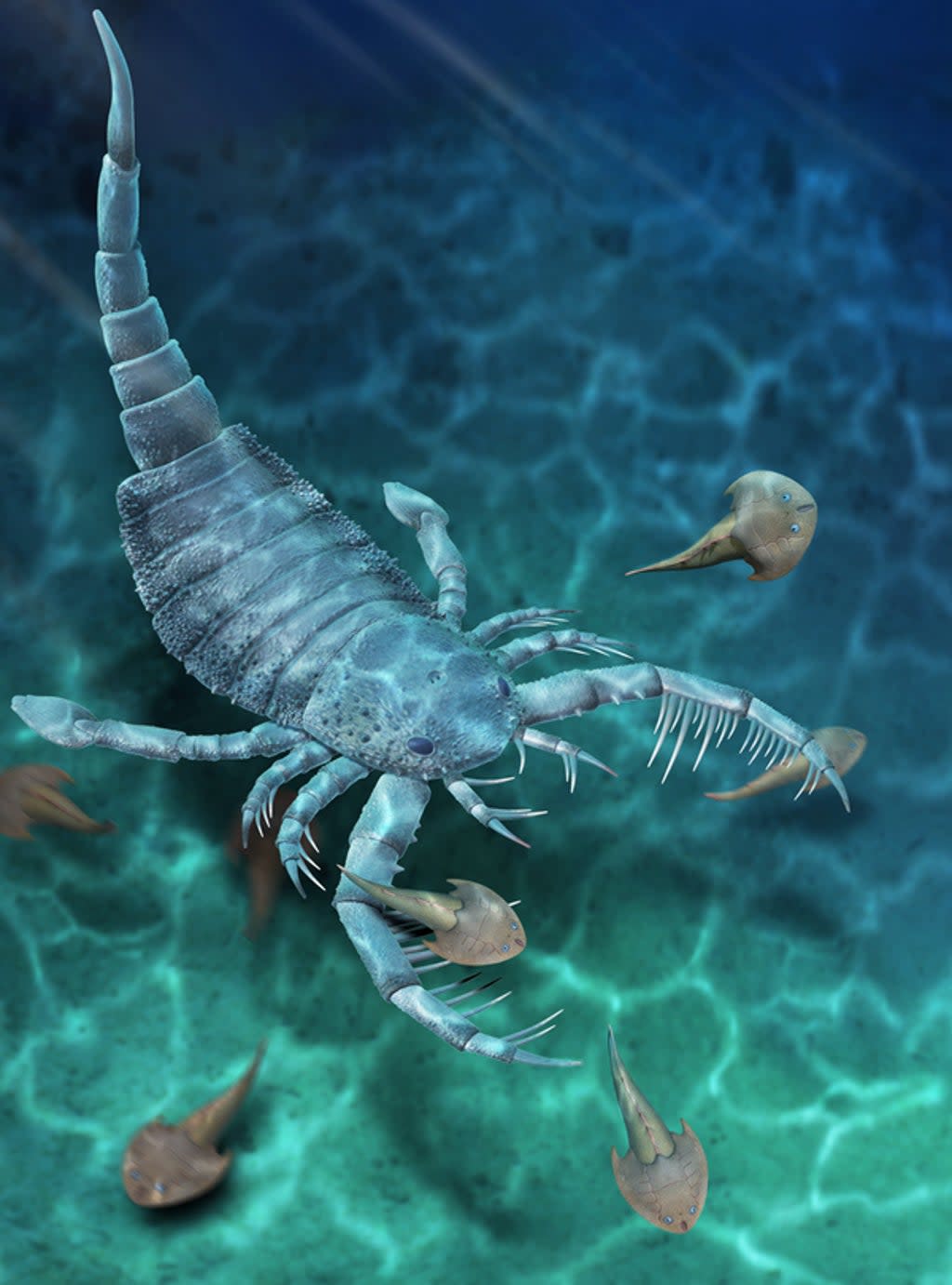Dog-sized sea scorpions roamed ancient sea floors in south China as ‘top predators’, study shows

Large sea scorpions, roughly the size of dogs, could have been one of the top predators to roam the sea floor of south China more than 400 million years ago, a study has found.
The remains of the sea scorpion, around 3.3-feet-long, were discovered by archaeologists, according to a study that will be published in the 30 November issue of Science Bulletin.
The remains of the scorpion showed it was a eurypterid or an ancient arthropod, a relative of the modern arachnid and horseshoe crab.
The fossil belongs to the Terropterus xiushanensis, a member of the Mixopterids -- a kind of eurypterid that had “prosomal limbs” or special arms that were lined with teeth-like structures used for catching prey.
“These limbs were presumably used for prey-capture, and analogies can be drawn with the ‘catching basket’ formed by the spiny pedipalps of whip spiders (Amblypygi) among the arachnids,” wrote doctoral researcher Wang Han and Professor Wang Bo, both from the Nanjing Institute of Geology and Palaeontology of the Chinese Academy of Sciences.

The creature lived during the Silurian age, between 443 million and 419 million years ago.
“Our knowledge of mixopterids is limited to only four species in two genera, which were all based on a few fossil specimens from the Silurian Laurussia 80 years ago,” said Dr Wang.
The appendages and body part fossils showed new evidence to expand the “morphological diversity” of Mixopterids, said a press release from the Nanjing Institute of Geology and Palaeontology.
The Terropterus, a large arthropod with a “sharp weapon”, could have been one of the top predators in the shallow marine environment of south China, it said.
So far, large predators have not been found in the Early Silurian environment, it added.
T xiushanensis was also the first mixopterid to have been found in the Gondwana supercontinent, which formed after the large landmass of Pangaea split into two.
No examples of this group have been discovered from Gondwana, according to the study.
“Our first Gondwanan mixopterid – along with other eurypterids from China and some undescribed specimens – suggests an under-collecting bias in this group,” the study said.
“Future work, especially in Asia, may reveal a more cosmopolitan distribution of mixopterids and perhaps other groups of eurypterids,” it added.
Earlier, a nearly six-foot sea scorpion was found that could have had an exoskeleton “helmet” shielding its head, a sleek narrow body and large grasping limbs for trapping prey.
Scientists named the beast Pentecopterus decorahensis, after the “penteconter”, an ancient Greek ship rowed by 50 oarsmen that saw service in the Trojan War.
Read More
Millions waiting to receive booster jab amid fears of rising Covid hospitalisations
Diver pulls 900-year-old crusader sword from bottom of Mediterranean Sea
Valneva vaccine generates ‘stronger immune response’ than Oxford jab
UK’s climate change sceptics change course with ‘false’ new narrative
Discovery of brain’s ‘storytelling station’ could aid dementia care
1.3 million flu vaccine invites to be sent out in days ahead of ‘challenging winter’

 Yahoo News
Yahoo News 
